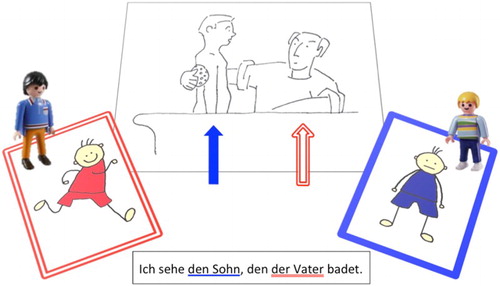Figures & data
Table 1. Summary of treatment studies reporting uni- and cross-modal treatment effects following sentence comprehension and production treatment using MT, MT-act, and TUF.
Table 2. Participants’ language profiles.
Table 3. Examples for each sentence type.
Figure 2. Timeline of the crossover treatment study, outline of tasks applied during assessments and sequencing of treatment phases. BL1/BL1’ = pre-treatment baseline assessments, post-Tx1/Tx2 = post-treatment assessments, Tx = treatment phase, ORC = object relative clauses, SRC = subject relative clauses, whoQ = who-questions.


